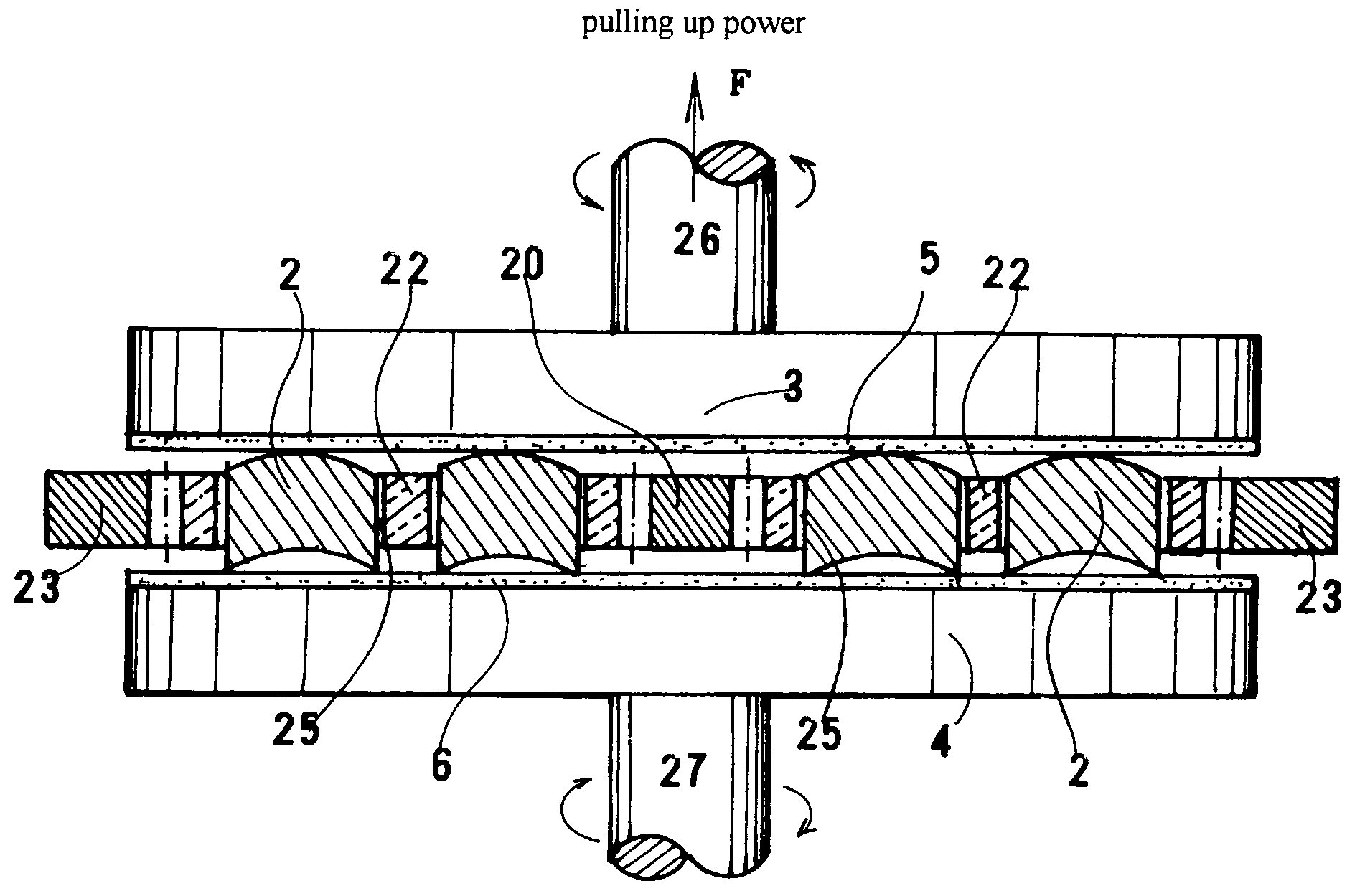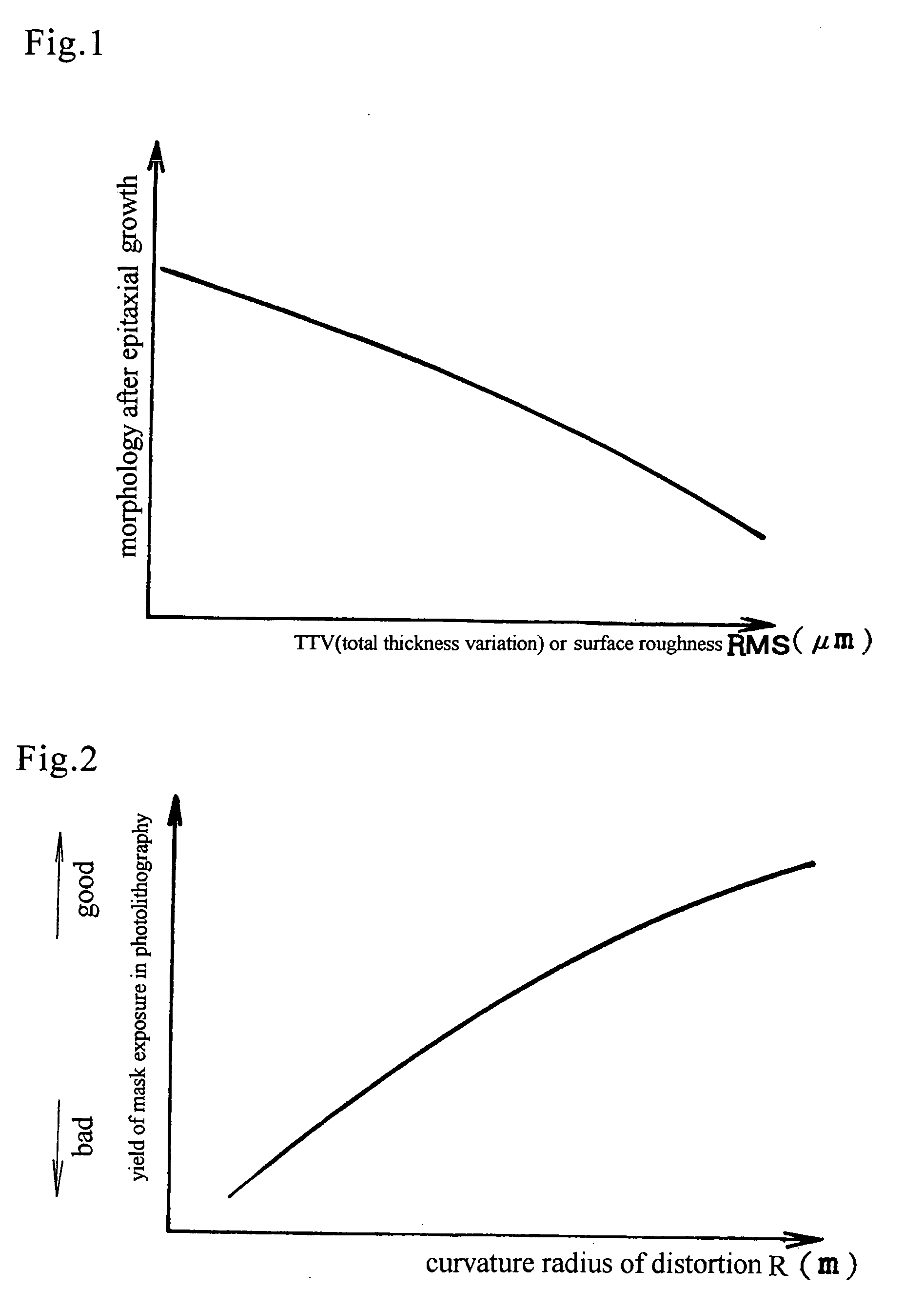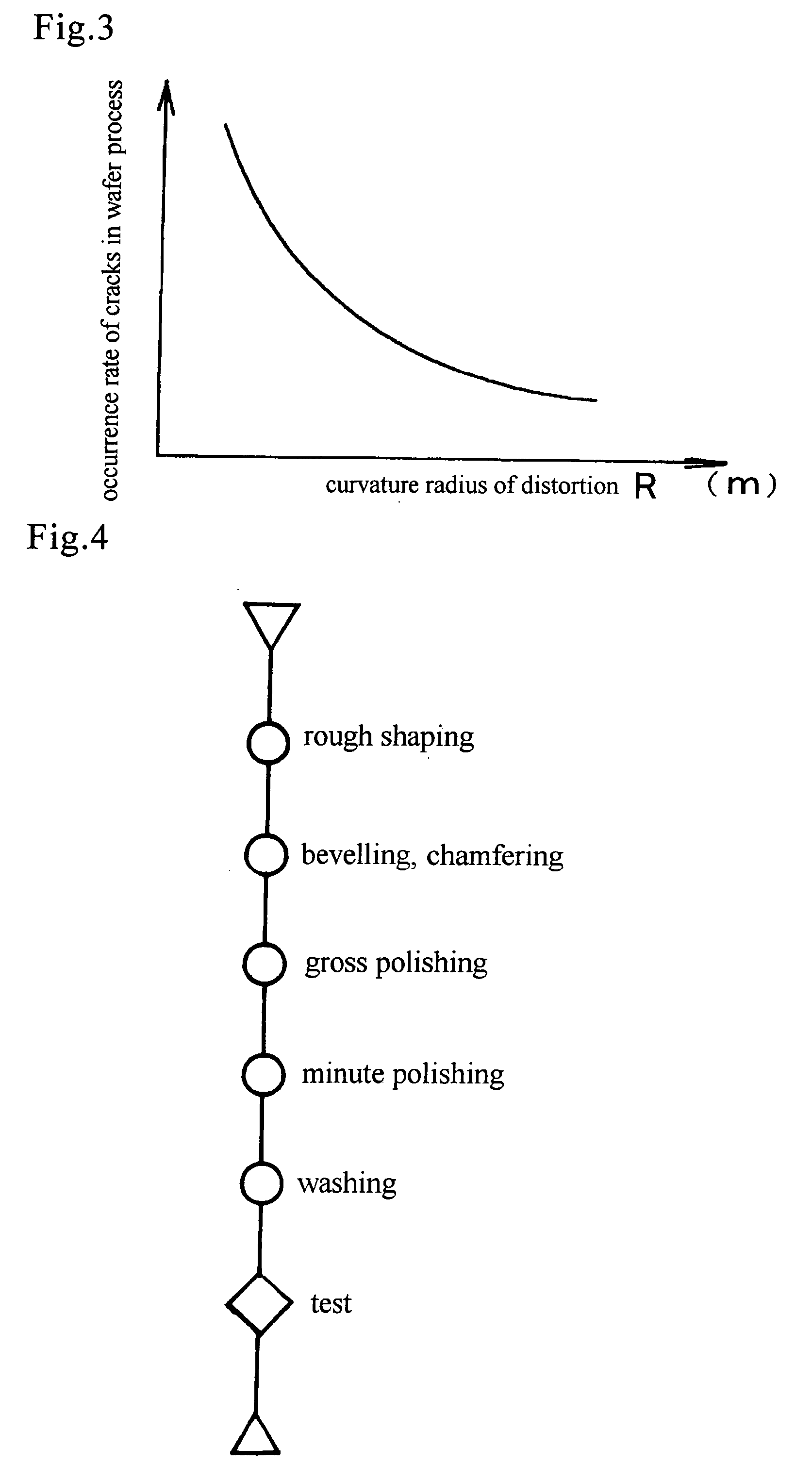Nitride semiconductor wafer and method of processing nitride semiconductor wafer
a technology of nitride semiconductor and semiconductor wafer, which is applied in the direction of semiconductor/solid-state device details, manufacturing tools, lapping machines, etc., can solve the problems of sapphire wafers with high mechanical rigidity, and sapphire wafers with weak points
- Summary
- Abstract
- Description
- Claims
- Application Information
AI Technical Summary
Benefits of technology
Problems solved by technology
Method used
Image
Examples
embodiment 1 (
[0097] [Embodiment 1 (2-inchφ GaN freestanding wafer))
[0098] 2-inchφ GaN freestanding wafers are made by an HVPE method which grows GaN films on a GaAs circular undersubstrate from a Ga-melt, HCl gas and NH3 gas in a furnace by reactions of Ga+HCl→GaCl and GaCl+NH3→GaN. The HVPE method makes the best use of the ELO (epitaxial lateral overgrowth) and the facet-growth which produces intentionally facet pits for gathering dislocations at bottoms of the pits and eliminates the GaAs undersubstrate and obtains a low-dislocation freestanding thick GaN film.
[0099] As-HVPE-grown GaN bulk wafers have rugged surfaces, random peripheral fringes, distortion and fluctuation of thickness. The rough-shaping step of FIG. 4 reforms the as-grown wafers into circular wafers by eliminating the random peripheral fringes.
[0100] The bevelling (chamfering) step of FIG. 4 eliminates sharp edges at circumferences of the circular wafers. Some of the prepared circular wafers have single-mode distortion and ot...
PUM
| Property | Measurement | Unit |
|---|---|---|
| diameter | aaaaa | aaaaa |
| distortion curvature radius | aaaaa | aaaaa |
| central height | aaaaa | aaaaa |
Abstract
Description
Claims
Application Information
 Login to View More
Login to View More - R&D
- Intellectual Property
- Life Sciences
- Materials
- Tech Scout
- Unparalleled Data Quality
- Higher Quality Content
- 60% Fewer Hallucinations
Browse by: Latest US Patents, China's latest patents, Technical Efficacy Thesaurus, Application Domain, Technology Topic, Popular Technical Reports.
© 2025 PatSnap. All rights reserved.Legal|Privacy policy|Modern Slavery Act Transparency Statement|Sitemap|About US| Contact US: help@patsnap.com



